ST JOHNS RIVER MONSTERS
with Paul MacInnis

Giant channel cats, alligator gar and bowfin are among the monstrous fish you can target in the St Johns River.
Just Like on TV!
Seems like we’ve had an awfully windy spring, at least every time I have a day off. Small craft advisories and kayaks don’t usually add up to a good day of fishing. My remedy when the fishing itch becomes insufferable is what I like to call St Johns River monster fishing in honor of Jeremy Wade’s iconic TV show. The concept is the same, pull up on a convenient river bank, chunk out some baits, kick back and wait for a rod to double over. If you pick the right spot, the wait isn’t long, and with the narrow, serpentine path of the St Johns, it is easy to find a lee bank to fish from.
Unfortunately, we are unlikely to tangle with 100 pound piraiba or 300 pound arapaima like Jeremy grapples with on TV. The St Johns river monsters are a lot smaller, but they can give you all the fight you want when targeted with appropriate tackle. The good news is you probably already have the tackle you need. Whatever gear you use for redfish and seatrout on the flats or bass in the lakes will work just fine.
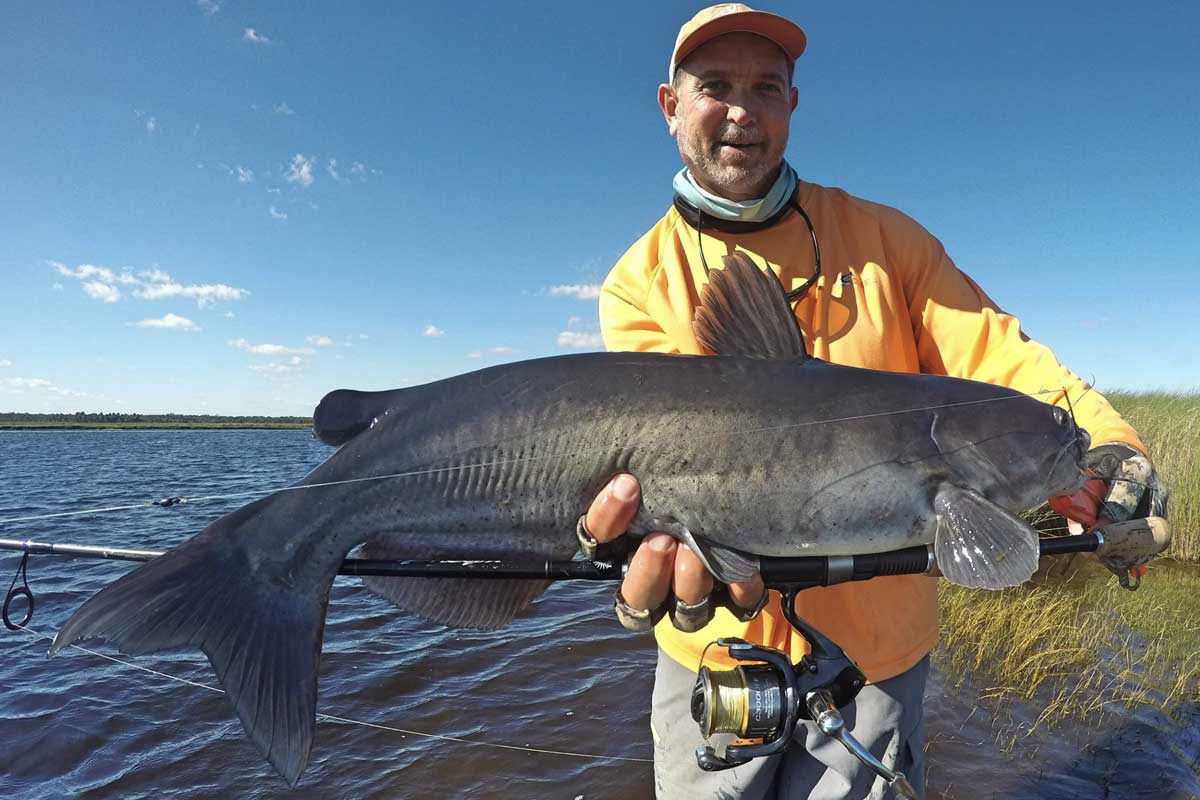
Paul with a huge channel cat caught fishing the St Johns River.
Monster Targets
There are a variety of species you might encounter while St Johns River monster fishing. Number one for me is catfish. The St Johns has three species of catfish, channel, white and snail catfish, and three species of bullheads. The bullheads, along with white and snail catfish, are small species. They make a tasty addition to a fish fry but they are not the subject of this article. I am looking for big fish, and channel cats are the biggest catfish we have. Channel cats over 30 pounds have been caught from the St Johns. I’ve never got one that big, but I’ve caught several weighing double digits and a few over 20 pounds.
A couple other species you are likely to encounter are true dinosaurs, bowfin and gar. Both have been swimming around rivers and swamps since before T-rex roamed the earth. Bowfin are your most likely catch when chunking big baits in the St Johns. They can get over 10 pounds and are a feisty, tough fish that will give you plenty of fight on typical redfish and bass tackle.
The other dinosaur fish you’ll find in the St Johns are gar. Unfortunately, the giant of the gar clan, the alligator gar, that can reach hundreds of pounds, isn’t found in the St Johns, but three other species, Florida, spotted and longnose gar are available. Of those three, the longnose gar is the biggest, sometimes exceeding five feet long. Occasionally, the big ones roll on the surface looking an awful lot like tarpon.
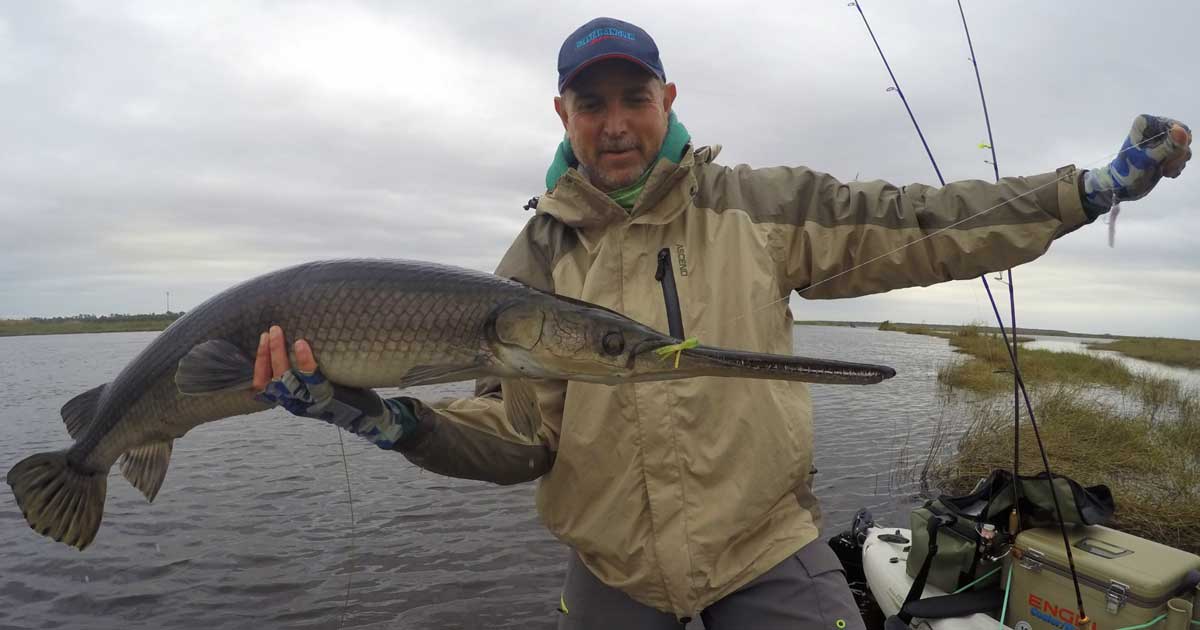
Alligator gar can put up a MONSTROUS fight!
Finding the Monster Bite
There are lots of baits that can be used for St Johns River monster fishing, but I opt to follow in Jeremy Wade’s footsteps and soak a big chunk of cut bait. It is a simple and effective technique. It doesn’t have to be a chunk of freshwater fish. Mullet or ladyfish that are leftover from your last saltwater trip make good St Johns baits. You can also catch panfish right from your fishing spot and use them for bait.
I’ll fish the chunks on the bottom using a simple fish finder rig with a half ounce egg sinker, or maybe a little heavier if the current is strong and dragging the baits downstream. Use about 18 inches of 20 pound test monofilament for leader. I’ve tried a variety of hooks and seem to get my best hookup percentage using khale style hooks with the 7/0 Team Catfish TC90Z being my favorite.
The temptation is to cast all your baits into the middle of the river where the current is it’s strongest. Most days I get my biggest fish in the little coves and bays that branch off the main river. I suspect the biggest fish are also the laziest fish and like to hang out in slack water out of the main current. I also find there are more catfish in the stretches of river near the big lakes like Harney, Poinsett, Winder and Washington.
This can be a pretty active fishery. If I go 15 minutes without a hit I’ll move on. Sometimes, moving 50 yards down the river is all it takes. When you are in the right spot, bites should come every five minutes or so.
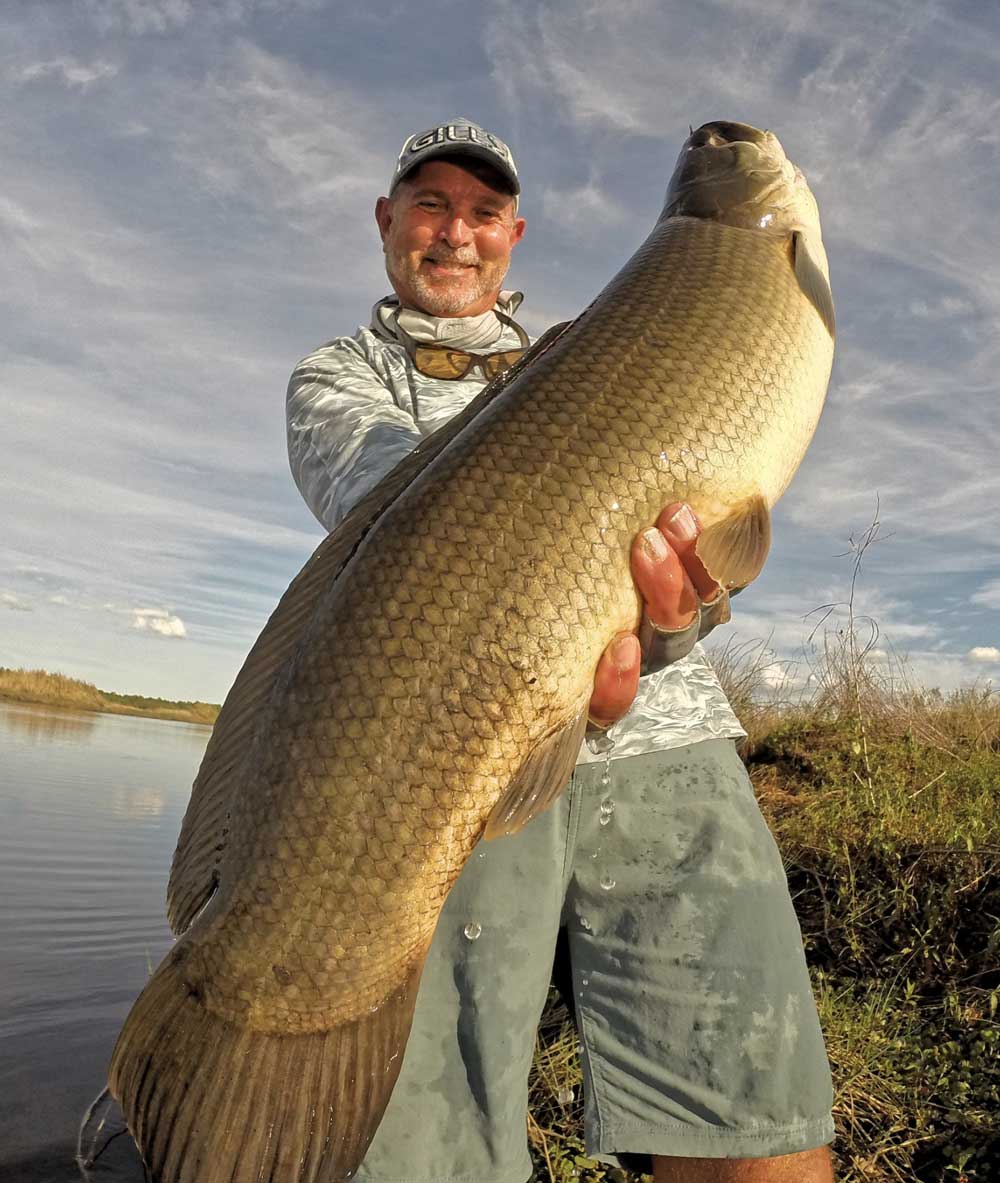
Paul with a massive bowfin in the St Johns River
Get in on the Action!
I admit I’ll take redfish and tarpon over channel catfish and bowfin, but I try to sample the St Johns monster bounty at least a few times every year. It is a laid back, easy style of fishing that produces good numbers of hard fighting fish. It even provides the makings of a fish dinner if you want to take a few catfish home. It’s great for beginners and kids. Kids especially love it when they find out they are going to be catching some dinosaur fish.

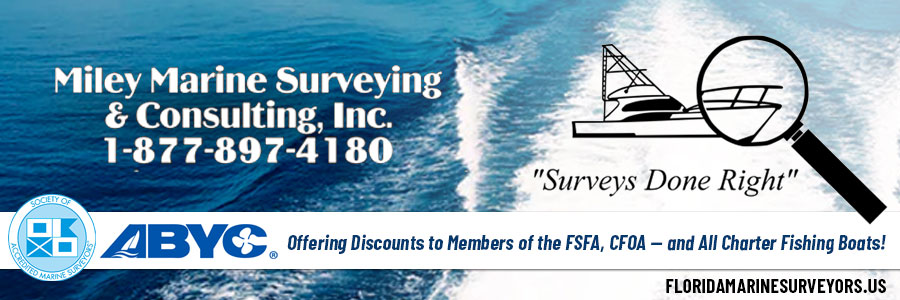

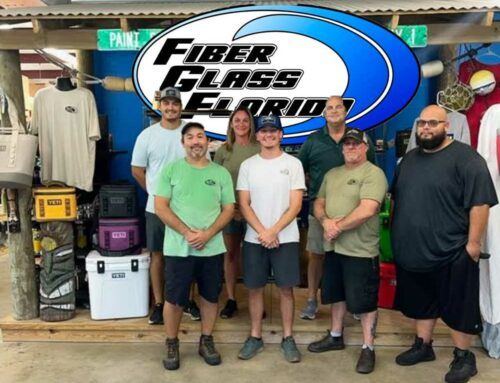
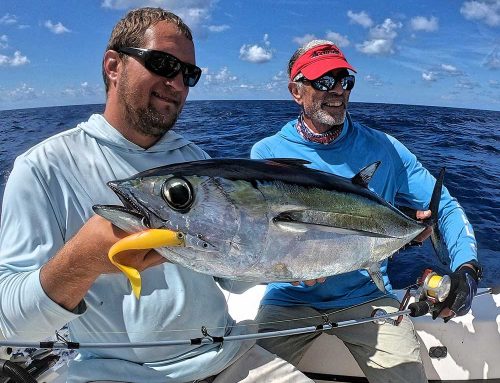
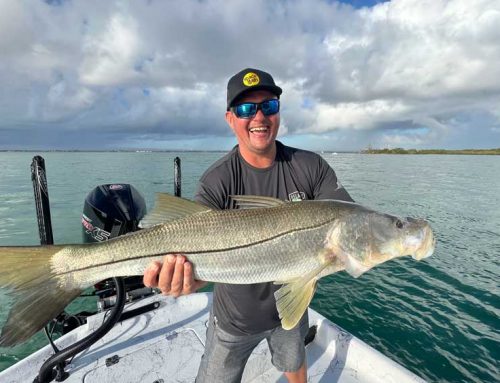


Paul, relatively new to the area. Been doing SW fishing but want to get back into FW fishing. Any recommendations for access points to the St John’s for bank fishing with a place to park your car nearby. Any help would be appreciated. Great article
This is a good time of year for bank fishing on the St Johns because water levels are low and there are lots of nice, high, dry banks to fish from. Once the rains of summer arrive, the river floods, sometimes up into the surrounding pastures and it is a lot harder to find nice banks to fish from. I live in the north end of Brevard County so the access points I use and am familiar with are in north Brevard. Here are the ones I use.
C.S. Lee Park off of hwy 46 https://goo.gl/maps/kBwwi8fg9PwsF5Ck6
Hatbill Park near Mims https://goo.gl/maps/LMiH3nXJ8jcyNRSz8
Tosahatchee Wildlife Management Area between hwy 50 and SR 528 at the end of the powerline road https://goo.gl/maps/1qV72GkCCje3eauv9
I’m sure there are plenty of other access points, but these are the ones I use for hike in bank fishing. If I am fishing from my kayak, I’ll also use where hwy 50 crosses the St Johns and Lone Cabbage off hwy 50. I’ll add that I see a lot less gators at C.S. Lee and Hatbill than I see farther south.
P.S. I live in Melbourne